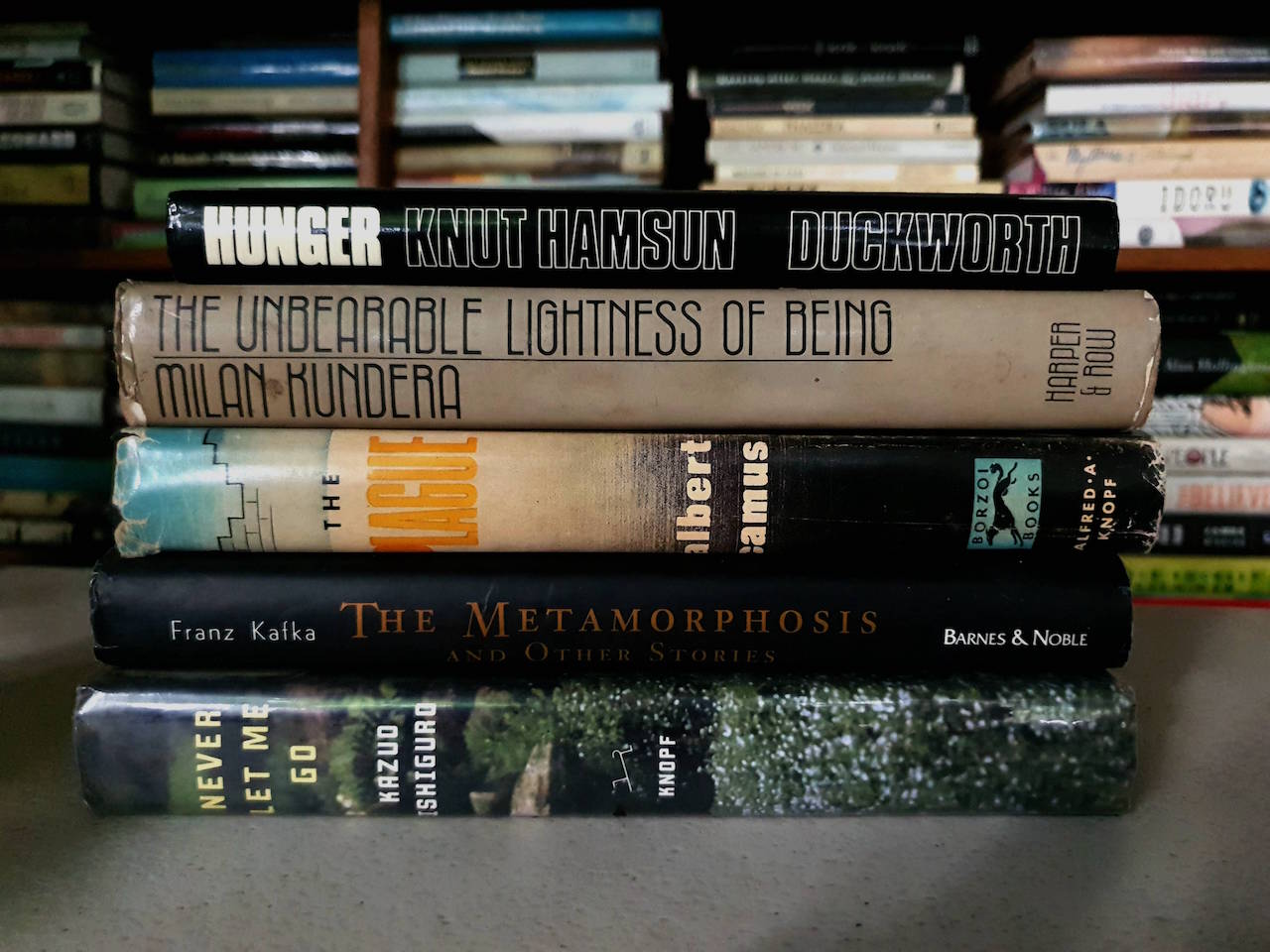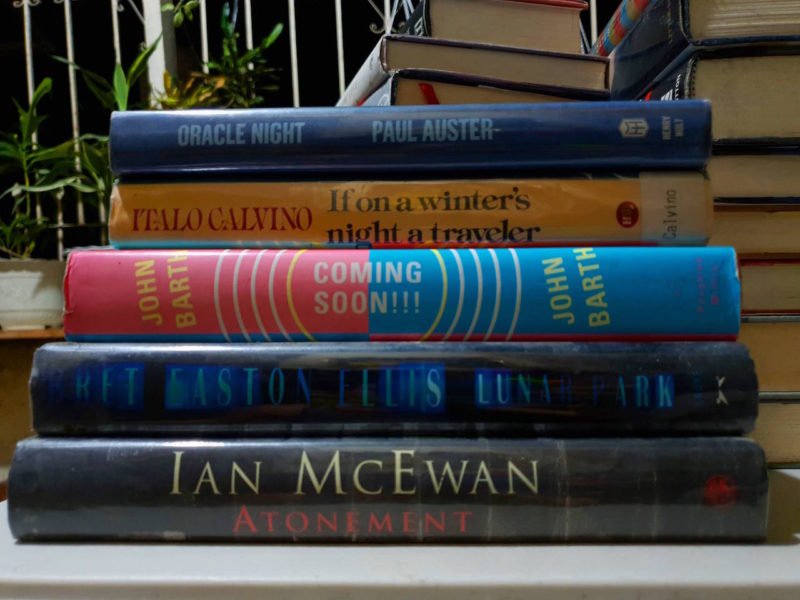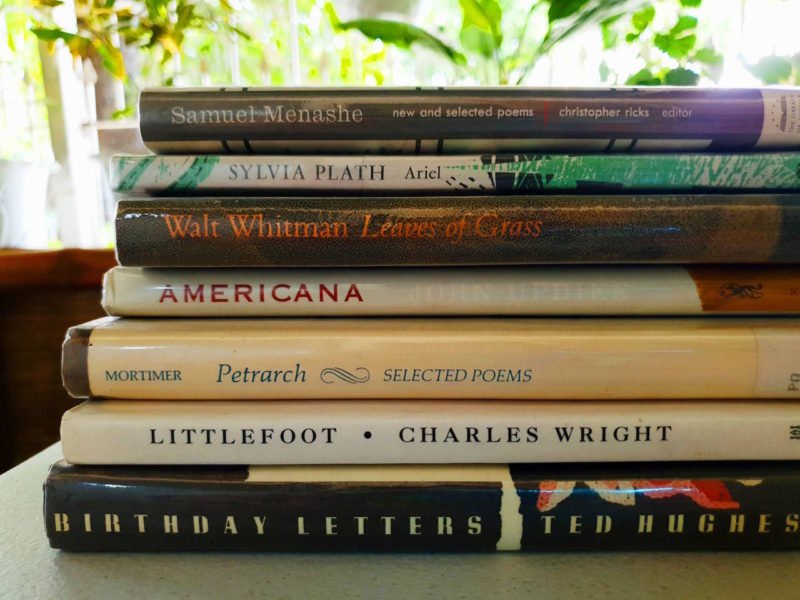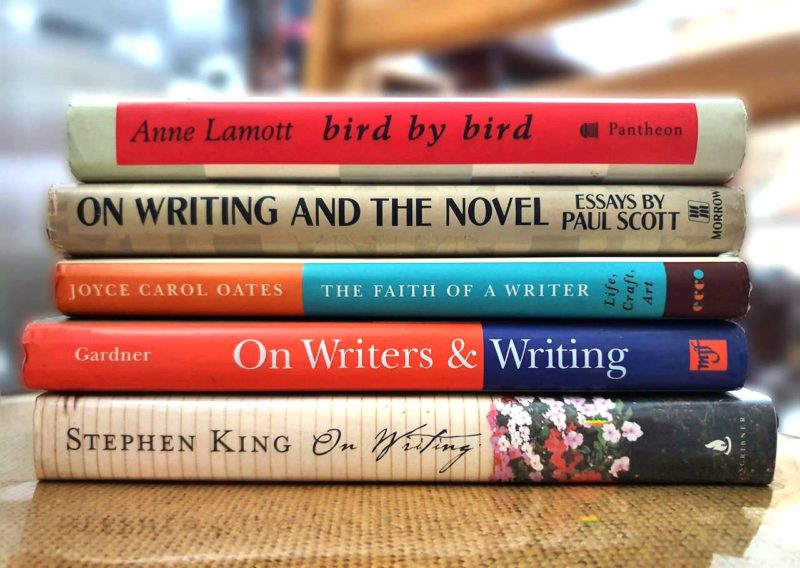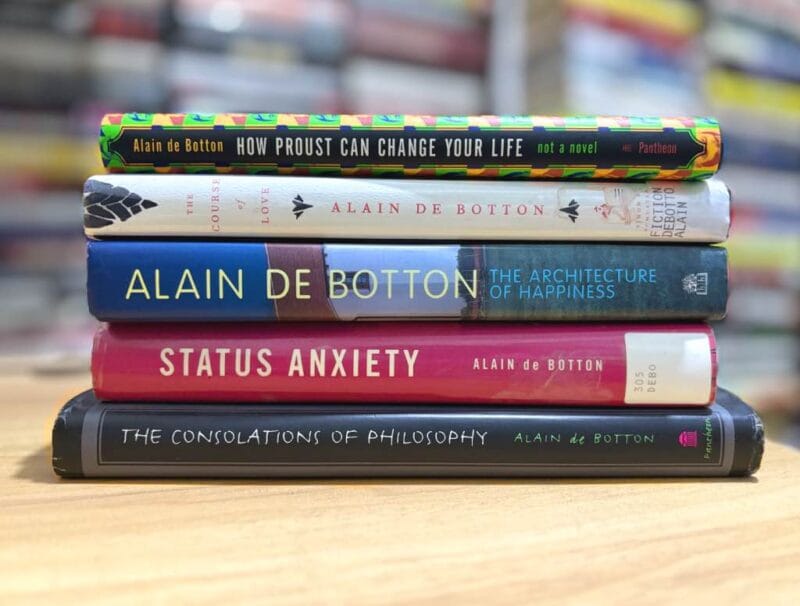Hunger (Sult, 1890) by Knut Hamsum
The book Hunger is an existential novel by Norwegian author Knut Hamsun about an unnamed narrator’s struggle with poverty and hunger.The protagonist is so hungry that he only eats what he can find on the ground, even pencils and his own fingers. He has no home, no family, and no job. He wanders the streets of Kristiana (now Oslo), trying to survive. The man’s hunger spreads to his mental well-being which in turn triggers an increased risk of mental health problems.
The book is considered an existential novel, in the traditions of psychological literature, with the protagonist representing the starving artist, albeit in a literal sense, for the sake of putting provocative ideas from pen to paper. Despite extreme hunger, the protagonist discovers that he’s able to write literary pieces that he was able to sell for a small change, enabling him to alleviate his condition, in pursuit of the next inspiration that will allow him to write more and go on living.
The Unbearable Lightness of Being (L’Insoutenable légèreté de l’être, 1984) by Milan Kundera
The Unbearable Lightness of Being is a novel by Milan Kundera, originally published in French translation in 1984. The story unfolds in Prague and Paris from the late 60s to early 70s, and tells of a love triangle between a Czech surgeon, Tomas, his wife Tereza, and a female artist Sabina. The novel follows Tomas through his relationship with the two women during the era of Soviet domination in Prague.
The theme of the book is the “unbearable lightness of being,” which is about how life treats those who are alive as if they were immortal. Being an existential novel, the book is about how people live their lives as if they were always going to live more days and then they die, and then they are forgotten as if they never existed. It’s as if life is as light as a feather, with love and sex referred to as “unbearable lightness” due to their fleeting significance to human affairs.
The Plague (La Peste, 1947) by Albert Camus
The Plague is the story of a man and how he struggles to fight the plague that is killing people in a French Algerian town called Oran. Albert Camus uses the plague to explore the meaning of life and death. He examines ideas of isolation, social injustice, moral responsibility, and the importance of human life, and how it is so insignificant in the face of mortality.
The story starts with Dr. Bernard Rieux, the protagonist, chronicling the outbreak of the plague in Oran, Algeria, and how its inhabitants were affected by it. Quickly, the plague spreads to other parts of the country and beyond its borders, before being brought under control. The story tells not only the tale of the outbreak, but also several seemingly unrelated stories of characters who are trying to cope with life in Oran.
The Metamorphosis (Die Verwandlung, 1915) by Franz Kafka
The Metamorphosis is an allegorical novella by Franz Kafka, published in German in 1915. Gregor Samsa, a traveling salesman, wakes one morning to find that he has been transformed into a gigantic beetle. He struggles with his identity and is often frustrated with his family members who do not understand the depth of his transformation. They do not accommodate his needs, but instead are preoccupied with their own problems. Her sister, Grete, is the only one willing to give him food.
Throughout the story, Kafka shows the importance of things that may seem small or insignificant in comparison to the drastic changes in one’s life. On the surface, this is a story of transformation, but it is also portrays the importance of family and values. The story ends with Gregor dying, still in bug form, after which the family plans on a trip. During the trip, Grete’s parents notice her transformation into a pretty young lady, making them realize of her need to find a suitable husband.
Never Let Me Go (2005) by Kazuo Ishiguro
The book Never Let Me Go is a science-fiction, albeit an existential novel, about Kathy, Ruth, and Tommy, three students at a boarding school called Hailsham. From a young age, they were told to believe they were being brought up as a special race,that they will eventually become donors of organ transplants to save other people’s lives. Although all students are vaguely aware of the donation program, they do not understand completely what the future holds for them.
Kathy’s narration of the story is often nonlinear, and tells of the future of all students who will “graduate” in the program. The reader, however, is left uninformed about the real situation of the students until the latter part of the book. The overall theme of this book is to explore the idea of what it means to be alive and what it might mean to live forever, the importance of humanity, and the lengths people will go to for love.
Further Reading
Why Read Existentialism? by Thomas Dylan Daniel, Medium
2020’s Existentialist Turn by Carmen Lea Dege, Boston Review
Unlikely Heroes in Despair: Existentialist Narrators in the Novels of Albert Camus, Jean Paul Sartre,and Don DeLillo by Courtney Mullis, Honors College and Center for Interdisciplinary Studies at CCU Digital Commons
Existentialist Movement in Literature by Nasrullah Mambrol, Literariness.org
